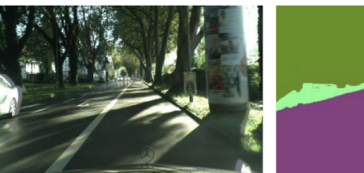
Driving Model Performance with Synthetic Data VII: Model-Based Domain Adaptation
After a long hiatus, we return from interviews to...
After a long hiatus, we return from interviews to long forms, continuing (and hopefully finishing) our series on how synthetic data is used in machine learning and how machine learning models can adapt to using synthetic data. This is our seventh installment in the series (part 1, part 2, part 3, part 4, part 5, part 6), but, as usual, this post is (I hope!) sufficiently self-contained. We will discuss how one can have a model that works well on synthetic data without making it more realistic explicitly but doing the domain adaptation work at the level of features or model itself.
Today we continue the series on using synthetic data to improve machine learning models.This is the sixth part of the series (Part I, Part II, Part III, Part IV, Part V). In this (relatively) short interlude I will discuss an interesting variation of GAN-based refinement: making synthetic data from real. Why would we ever want to do that if the final goal is always to make the model work on real data rather than synthetic? In this post, we will see two examples from different domains that show both why and how.
We continue the series on synthetic data as it is used in machine learning today. This is a fifth part of an already pretty long series (part 1, part 2, part 3, part 4), and it’s far from over, but I try to keep each post more or less self-contained. Today, however, we pick up from last time, so if you have not read Part 4 yet I suggest to go through it first. In that post, we discussed synthetic-to-real refinement for gaze estimation, which suddenly taught us a lot about modern GAN-based architectures. But eye gaze still remains a relatively small and not very variable problem, so let’s see how well synthetic data does in other computer vision applications. Again, expect a lot of GANs and at least a few formulas for the loss functions.
With the Christmas and New Year holidays behind us, let’s continue our series on how to improve the performance of machine learning models with synthetic data. Last time, I gave a brief introduction into domain adaptation, distinguishing between its two main variations: refinement, where synthetic images are themselves changed before they are fed into model training, and model-based domain adaptation, where the training process changes to adapt to training on different domains. Today, we begin with refinement for the same special case of eye gaze estimation that kickstarted synthetic data refinement a few years ago and still remains an important success story for this approach, but then continue and extend the story of refinement to other computer vision problems. Today’s post will be more in-depth than before, so buckle up and get ready for some GANs!
Today, I continue the series about different ways of improving model performance with synthetic data. We have already discussed simple augmentations in the first post and “smart” augmentations that make more complex transformations of the input in the second. Today we go on to the next sub-topic: domain adaptation. We will stay with domain adaptation for a while, and in the first post on this topic I would like to present a general overview of the field and introduce the most basic approaches to domain adaptation.
Last time, I started a new series of posts, devoted to different ways of improving model performance with synthetic data. In the first post of the series, we discussed probably the simplest and most widely used way to generate synthetic data: geometric and color data augmentation applied to real training data. Today, we take the idea of data augmentation much further. We will discuss several different ways to construct “smart augmentations” that make much more involved transformations of the input but still change the labeling only in predictable ways.
Welcome back, everybody! It’s been a while since I finished the last series on object detection with synthetic data (here is the series in case you missed it: part 1, part 2, part 3, part 4, part 5). So it is high time to start a new series. Over the next several posts, we will discuss how synthetic data and similar techniques can drive model performance and improve the results. We will mostly be talking about computer vision tasks. We begin this series with an explanation of data augmentation in computer vision; today we will talk about simple “classical” augmentations, and next time we will turn to some of the more interesting stuff.